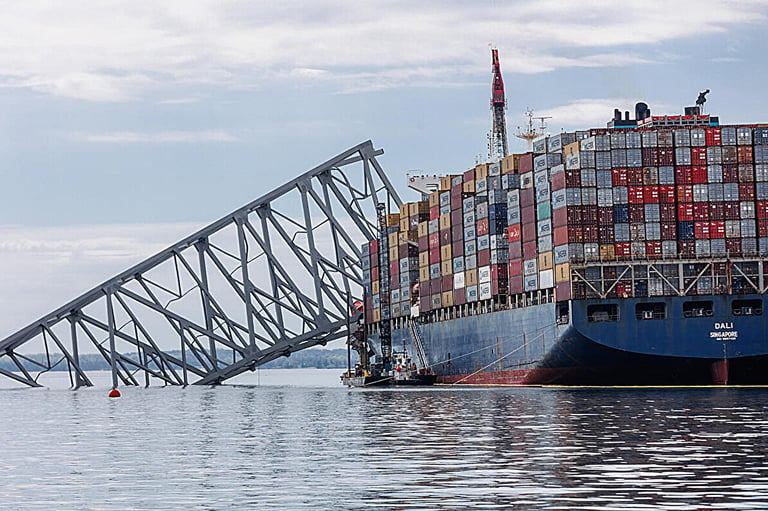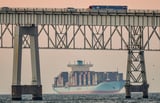U.S. Bridges at Risk: Study Reveals Top Sites Vulnerable to Large-Ship Collisions
September 23, 2024
Further findings from the ongoing study are expected to be released in 2025, involving a multi-disciplinary team from Johns Hopkins and Morgan State University.
Shields emphasizes that while ship traffic is a critical factor in assessing bridge risk, local conditions and existing safety measures also play vital roles.
The urgent assessment of U.S. bridge vulnerability was prompted by the spring collapse of the Francis Scott Key Bridge in Baltimore, which occurred after a collision with a large container ship.
This incident raised significant concerns about the risks posed to other bridges from similar collisions.
In response, a team led by Michael Shields at Johns Hopkins University has initiated a comprehensive study analyzing data from over 200 major U.S. bridges, marking the first national-scale evaluation of large-ship traffic.
The research, which utilizes six years of U.S. Coast Guard data, tracks ship movements minute-by-minute to assess large-ship traffic under these bridges.
Findings indicate that Maryland's Chesapeake Bay Bridge and Francis Scott Key Bridge rank among the top 10 U.S. bridges for ship traffic, with the Key Bridge averaging one ship longer than 300 meters passing beneath it daily.
The analysis reveals that a small number of bridges experience a disproportionate amount of traffic from the largest ships, underscoring the need for rigorous risk assessments for these structures.
In 2023, the Bay Bridge saw a 14.5% increase in traffic from pre-pandemic levels, while the Key Bridge experienced a 9% increase.
Reconstruction of the Key Bridge is scheduled to commence in 2025, with the Maryland Department of the Environment seeking permits for the project.
The research aims to analyze ship traffic data dating back to 2009 and assess the risk of ship strikes using various criteria, including ship traffic and aberrancy rates.
Ultimately, the study aims to modernize risk assessment models for U.S. bridges to prioritize safety investments where they are most needed.
Summary based on 4 sources
Get a daily email with more US News stories
Sources

Baltimore Sun • Sep 24, 2024
Chesapeake Bay Bridge, Key Bridge among leaders for large ship traffic, Hopkins study shows
Tech Xplore • Sep 23, 2024
Data mining reveals US bridges with most large ship traffic
Baltimore Fishbowl • Sep 23, 2024
Six months after Key Bridge collapse, Hopkins team finds Maryland’s bridges among highest in nation for mega- and large-ship traffic